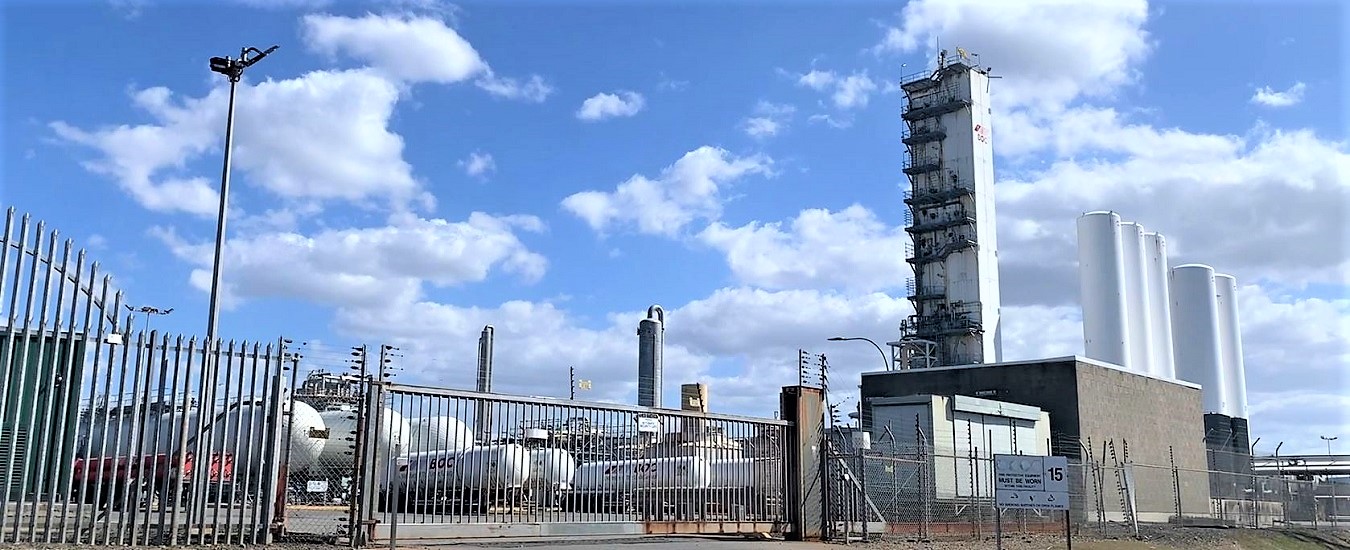Dr Neil Thompson, Adjunct Associate Professor with the Centre for Clean Energy Technologies at the Queensland University of Technology, has created a series of three short videos for the NSW Department of Primary Industries explaining how innovative green hydrogen technologies have been successfully applied to practical applications.
BOC Bulwer Island Refinery
In the first of these videos, Neil discusses the BOC Bulwer Island Refinery in Brisbane. The plant is a world’s best practice example of closed-loop industrial design using solar PV energy and wastewater to generate clean hydrogen for the production of rare gases such as argon and for use in ammonia plants and power stations. It will also support fuel cell vehicle refueling facilities across fleet, municipal transport, agribusiness, mining and tourism operations.
The Bulwer Island Refinery was built in 1996 and originally produced gases using hydrogen produced via a high emissions process called steam-methane reforming. The high emissions of hydrogen were replaced with green hydrogen as a result of the BOC $3.1 million Renewable Hydrogen Supply Project, supported by a $950,000 grant from the Australian Renewable Energy Agency, ARENA, approved in 2019. Green Hydrogen is produced using renewable power to split water molecules into hydrogen and oxygen.
Sir Samuel Griffith Building, Griffith University
The Sir Samuel Griffith Building at Griffith University in Brisbane was built in 2013. Its renewable energy and energy efficiency features include: solar PV; batteries; an electrolyser, hydrogen fuel cell and solid state hydrogen storage system; a solar thermal hot water system; chilled water storage; and passive lighting design.
On weekdays when classes are in session, the system supplies the building with energy generated by rooftop and window mounted solar PV. Surplus energy is stored in the batteries. When the batteries are fully charged, spare solar PV energy is directed to the electrolyser which splits water into hydrogen and oxygen with produced solid-state hydrogen stored in metal hydride tanks. On cloudy days the building draws on energy reserves from the batteries until their state of charge reaches a minimum safe level. At this point, the building control system releases hydrogen from the metal hydride tanks by applying reserve hot water from a rooftop solar thermal system. Now a gas, the hydrogen is directed to a fuel cell which draws in oxygen from the surrounding air. The oxygen and hydrogen combine to create electricity in the fuel cell and heat for making more hot water.
This off-grid building is totally energy self-sufficient. The system is a good fit for remote areas of Australia in place of diesel-based power, such as in the Queensland Daintree region where this system is being adopted to power agribusiness, mining, tourism and residential communities.
Truck stop, Port of Brisbane
An emerging market for hydrogen fuel at truck stops is being driven by the launch of heavy-duty fuel cell electric trucks. A Port of Brisbane truck stop had been supplying over 20 million litres of diesel fuel every year before being refitted with new hydrogen refueling equipment. A rapid response polymer electrolyte membrane (PEM) electrolyser in a 20 foot shipping container was installed off-site at BOC Bulwer where rooftop solar panels generate renewable hydrogen using onsite rainwater storage as feedstock. The truck stop will service both fuel cell electric and battery electric vehicles, with the proposed installation of hydrogen fuel cells providing an effective solution for DC fast-charging as well.




2 comments, add yours.
Daryl Scherger
What are the economics and operating life of these systems compared conventional diesel systems running on biodiesel?
lynneholmes
AuthorThanks Daryl
That is an important part of the puzzle, and our hydrogen specialist points to work being undertaken in NSW and notes…
“…that the work currently being undertaken in conjunction with BOC and Foton in NSW for hydrogen fuel cell buses as per article below is on the basis that the total lifetime $/km cost of the vehicle is the same as that for diesel and/or biodiesel type over the same (or longer) life cycle:”
BOC and Foton partner to accelerate hydrogen bus dev in ANZ | BOC Australia – A Member of The Linde Group (boc-limited.com.au)
Hope that helps
Cheers,
John O’Connor (JOC)